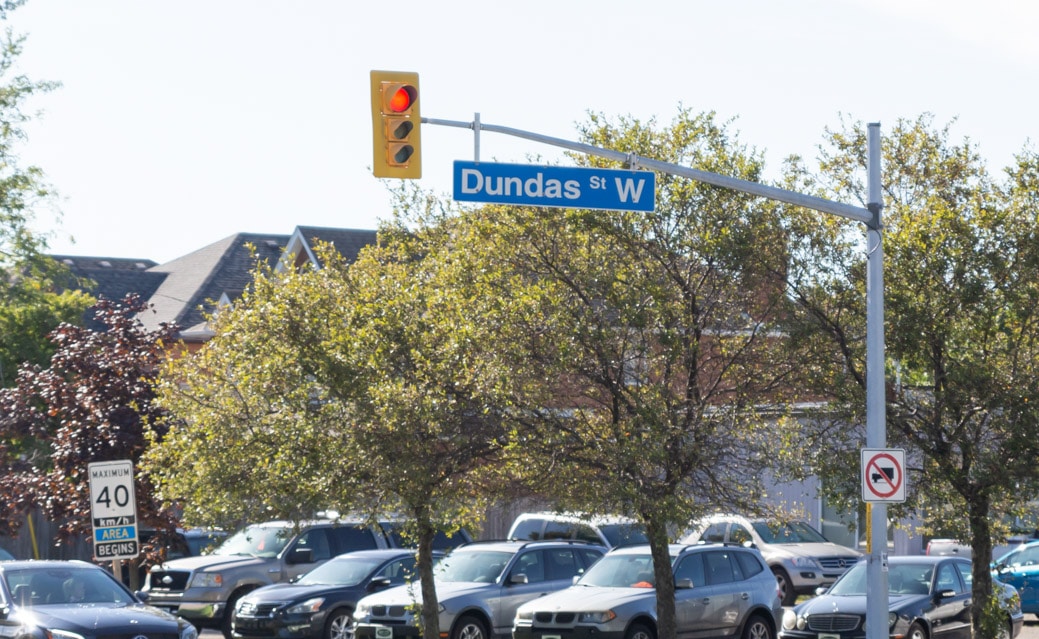The Dundas Bus Rapid Transit Project introduces new transportation plans for the future of the GTA
Metrolinx highlights key prospects and considerations while addressing the public’s associated concerns.
As the Greater Toronto Area (GTA) continues to increase in population, growing employment opportunities and rapid urban development has raised the demand for efficient transit systems along major roadways. Last Wednesday, Metrolinx hosted a presentation and Q&A session regarding the Dundas Bus Rapid Transit (BRT) Project. The panel consisted of experts from Metrolinx’s project team including Maria Doyle, Darcy Wiltshire, Greg Medulun, Matthew Williams, and Kevin Phillips.
One of the many transit projects engineered to improve transit network efficiency and thus combat traffic congestion includes the Metrolinx-led Dundas BRT Project. The project is geared toward improving bus services along Dundas Street between Hamilton, Burlington, Oakville, Mississauga, and Toronto.
The project aims to include dedicated bus lanes designed to separate buses from traffic. These designs aim to increase bus service frequency and reliability.
Under the current plans, the BRT Project will extend from Highway 6 in Hamilton to Kipling Transit Hub in Etobicoke, Toronto, netting a total of 48 kilometres of bus lanes. The BRT connects with the upcoming Hurontario LRT at Hurontario & Dundas, along with TTC Line 2 and GO Transit Milton Line at Kipling Station.
Kevin Philips, the BRT project manager from AECOM, discusses a key benefit brought by the Dundas BRT. He states, “we have identified that there would be an average travel time savings for bus riders of up to 14 minutes.”
The BRT will improve connections between the communities of Mississauga, all the while aligning with the city’s plan of developing an effective transportation network that allows free and efficient movement.
Upon completion of the BRT system, UTM students who frequently utilize the MiWay routes 1C and 101 will find trips to the subway faster and more reliable.
The team also presented preliminary designs on the BRT system, focusing on the 17 kilometre stretch of Dundas Street running in Mississauga.
Eight bus stops have been proposed along the stretch of Dundas Street east of Confederation Parkway, all located at major cross streets. These stops are more sparsely placed than those of the current local bus routes, which will allow higher operation speeds and facilitating. Further stops will be planned as the project will be in effect this year.
Many pre-existing streets will be widened to 42 metres, with various portions only being widened to 36 metres and 40 metres. The new road layout will include four general purpose lanes (two for each direction), one left-turn lane, two directional bus lanes with bus platforms, and cycling tracks along both sides of the road.
Based on preliminary estimations, two stretches of Dundas Street are projected to be great environmental obstacles to road widening.
First, the densely developed Hurontario Street corridor is subject to additional widening constraints. The existing street is only 23 meters wide which will introduce issues involving land acquisition since it would not be possible to further extend the width. The road widening process will become complicated, if not controversial, should heritage buildings be among the displaced.
Numerous alternatives have been introduced, but the Metrolinx’s project team is now inclined to move forward with widening this stretch of Dundas Street.
Second, the stretch of Dundas Street near Erindale Park and UTM lies near natural and cultural heritage sites. Widening the road would impact the natural landscape and may also require land acquisition. The team is conducting further investigations before deciding the course of action for this section of the road.
“We are exploring opportunities to mitigate the potential property impact in the areas where possible, and we are doing this through optimization of the [Dundas BRT] corridor plans,” states Philips.
As the project moves forward from one stage to another, more public consultation events will be held to keep the public updated with the project progression and to address any new concerns.


